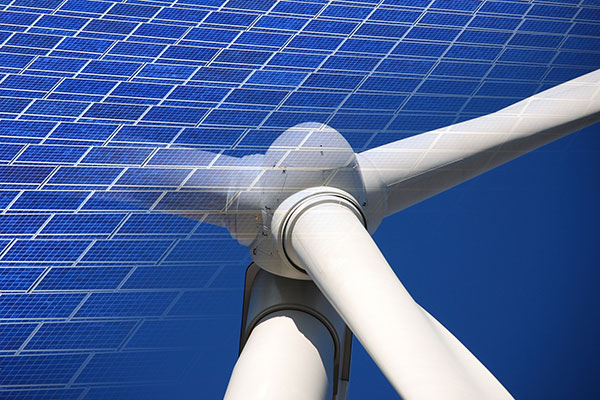Is this investment trust sector too hot to handle?
12th October 2021 09:51
by Faith Glasgow from interactive investor
Clean or green energy is a popular sector right now. Faith Glasgow explores the merits of investing and finds out whether it is worth paying a premium for chunky dividend yields.

By far the largest of the Association of Investment Companies’ (AIC) seven infrastructure sub-categories is the Renewable Energy sector, with 14 members. But like almost all their sibling infrastructure trusts, the renewable energy investment trusts are trading across the board on a persistent share price premium to the underlying asset value (NAV).
The sector average premium as of 11 October 2021 is 6.5%, according to Winterflood data, and in fact that’s significantly below the 52-week average of 10.2%. Most of the trusts in the sector have traded on double-digit premiums during the past year, although only three do at present: Renewables Infrastructure Group (LSE:TRIG), Greencoat Renewables (LSE:GRP) and JLEN Environmental Assets (LSE:JLEN).
So what are the pressures at work here? What’s the outlook for the renewable energy sector, and for the generous income stream that has historically been generated by infrastructure projects? And how should investors view the premiums attached to these trusts?
- Andrew Pitts’ trust tips: Nick Train available on a rare discount
- iShares Global Clean Energy ETF keeps place in ii ACE 40
- Investment trust premiums and discounts explained
Plenty of tailwinds for the sector
A number of forces, not all working in the same direction, are at play as far as renewable energy investment is concerned.
Most obvious is the environmental, macroeconomic and political backdrop. There is a global commitment to reducing carbon emissions to net zero by 2050, and massive investment in alternatives to fossil fuels is critical to achieving that goal over coming decades.
As William Heathcoat Amory, an analyst at Kepler Partners, observes: “The build-out of further capacity over the next decade is likely to be huge, and investors will require good returns to supply the capital to enable this. As such, we think it is a fair assumption that attractive returns will continue to be earned for many years to come from this asset class.”
That transition to a low-carbon economy also offers enormous potential for developing new directions in renewable energy, points out Chris Tanner, co-lead adviser to the JLEN Environment Assets investment trust.
“The environmental infrastructure sector will only continue to expand as more innovative technologies and techniques are developed, which is what makes it such a dynamic space to operate in. We see opportunities in the established asset classes that we are already invested in, and also in new and evolving technologies that help to decarbonise other sectors such as heating and transport,” he says.
No easy road to renewables
However, there are challenges ahead. As Kieran Drake, research analyst at Winterflood, comments, while further development of renewable energy assets in the UK is likely to create additional investment opportunities for funds, it may also tend to push down the price of power over the long term, potentially impacting to some extent on corporate revenues.
In the meantime, electricity prices are spiking - but that doesn’t mean these trusts are necessary likely to benefit significantly. The reason is down to most energy companies selling their electricity to customers at fixed prices for set periods. As a result, firms do not feel the positive impact of short-term price hikes.
It’s also clear, as the current global supply shortages highlight starkly, that the transitional journey is unlikely to be a smooth one. “We are still a long way off having an energy system based predominately on renewables that is able to deal with unfavourable weather conditions and wider macro shocks,” Tanner warns.
That has been demonstrated this year, following a summer of unusually light winds in the UK. Wind’s share of UK electricity generation in the first three weeks of September, at 11%, was half the 23% generated over the same period in 2020, according to a recent research note from broker Stifel.

Revenues underpinned
Against current structural vulnerabilities, one key attraction for the renewable energy sector is the range of government subsidies underpinning revenues. “These subsidies tend to have some link to inflation built in, although few funds continue to directly link their dividend growth to inflation,” explains Drake.
From the perspective of private investors, the biggest single positive aspect of these trusts is the reliable, healthy dividend yield they continue to deliver in the face of a continuing low interest rate environment. The average yield for the sector is 4%, but several trusts, including Foresight Solar (LSE:FSFL), Bluefield Solar Income (LSE:BSIF) and JLEN, are paying more than 6%.
“Low interest rates globally mean that assets like wind farms and solar parks (unsubsidised or subsidised) offer investors attractive long-term returns, with a heavy emphasis on income,” says Heathcoat Amory.
He makes the additional point that the current income yield is at a hefty premium to bonds.
Should investors be wary of paying a premium price?
So should the sector’s apparently unshakeable premium be a deterrent to investors? JLEN’s Tanner thinks not, as far as his trust is concerned anyway. He argues that investors appreciate the trust’s conservative approach to the valuation of its assets (which in effect means the real value of the portfolio holdings may be higher than the quoted NAV), and that is helping to support the current premium.
“We also think that the current dividend level and progressive dividend policy are attractive to investors,” he adds. “Even at the current share price, with a premium to NAV of around 13%, the dividend yield is over 6%. We are comfortable that the premium is justified by the characteristics of the fund.”
More broadly, Heathcoat Amory points out that renewable energy trusts’ premiums are currently slightly below historic averages. “We think there has been a lot of share issuance in the sector, which has likely had an impact in bringing the premiums lower,” he says.
“But also perhaps investors are expecting dividend cover - the number of times earnings will cover dividends – to be modestly down for those trusts exposed to wind farms, thanks to the low wind resource during the summer,” he explains. Such a fall would tend to dampen demand for shares.
Stifel’s report draws a similar conclusion. “Lower revenues from [wind] generation that are not wholly offset by higher power prices are likely to mean that dividend cover is lower than would have been the case if budgeted production was achieved,” it concludes.
Relatively low premiums across the sector raises the question for long-term investors of whether now may prove a useful buying opportunity.
Winterflood’s Drake is not inspired: he argues that even though premiums are lower than they have been, decent value is thin on the ground at present.
Nonetheless, and despite the wind challenges of recent months, Winterflood is currently recommending the UK wind farm specialist Greencoat UK Wind (LSE:UKW), which boasts one of the highest levels of dividend cover in the sector. “The fund has an attractive dividend yield of 5.4% and it still aims to increase the dividend in line with RPI inflation, albeit with a time lag. It has performed well since launch in 2013 and its premium of 7% is broadly in line with the peer group average,” adds Drake.
Kepler is somewhat more upbeat, highlighting the highly diversified Renewables Infrastructure Group (LSE:TRIG), as well as UKW. “Both UKW and TRIG’s premiums have come back a bit and in the context of history look decent value,” says Heathcoat Amory.
He adds that the solar funds such as Foresight Solar (LSE:FSFL)had a reasonable summer, but that they “aren’t necessarily in a position to capitalise on recent strong prices, especially given that the amount of electricity generated in the summer is significantly higher than in the winter months”.
Overall, this is a sector with big attractions: strong yields, government backing, great potential long-term growth as the world feels its way towards net zero. But renewable energy is, of course, very much a work in progress, built on an increasingly unpredictable weather system. Investors need to go in with their eyes open, and bear in mind that more diversified portfolio approaches could offer greater resilience against short-term volatility.
These articles are provided for information purposes only. Occasionally, an opinion about whether to buy or sell a specific investment may be provided by third parties. The content is not intended to be a personal recommendation to buy or sell any financial instrument or product, or to adopt any investment strategy as it is not provided based on an assessment of your investing knowledge and experience, your financial situation or your investment objectives. The value of your investments, and the income derived from them, may go down as well as up. You may not get back all the money that you invest. The investments referred to in this article may not be suitable for all investors, and if in doubt, an investor should seek advice from a qualified investment adviser.
Full performance can be found on the company or index summary page on the interactive investor website. Simply click on the company's or index name highlighted in the article.